The word indie has been used to mean different things at different points in history. Some individuals envision a coder working late in his parent’s basement, while others imagine a game appearing on a digital marketplace without a publisher advertisement. To others, the look or difficulty of a game is enough to make judgment about whether or not it’s indie. The rule of thumb though, is that an indie game is made by a small team or individual with little or no money and is self-published, or at least developed without the involvement of big game firms.
With the rise of digital storefronts like itch.io, Steam, and IndieCade, indie developers have more avenues than ever to bring their creative ideas to life and share them with others. But how did we get here? Where did indie games come from? What has changed since then and why should we care about indie games now? In this article we take a look at the history of indie games and how they came to be where they are today.
CONTENTS:
THE VERY BEGINNING
– Pong
– The Video Game Crash
– Tetris
– Ms. Pac-Man
– The Beginning of Game Engines
THE 1990’s
– Shareware
– id Software & Epic Games
– The Beginning of Video Game Mods
– Newgrounds
– Game Engines Continue to Evolve
– Flash Games Go Viral
THE 2000’s
– Game Mods Surge in Popularity
– Mod DB
– Half-Life 2
– The Steam Revolution
– Unity Engine
– The Emergence of Xbox Live Arcade
– Gary’s Mod
– The Beginning of Social Media
– Unreal Engine 3
– The Indie Game Boom!
– Braid
– Minecraft
THE 2010’s
– Indie DB
– Desura
– Angry Birds Revolutionizes Mobile Gaming
– Indie Game: The Movie
– Steam Greenlight
– Crowdfunding
– The Beginning of Early Access
– Total Conversion Mods
– Flappy Bird Goes Viral
– The Release of itch.io
– YouTube Let’s Play’s
– Indiepocalypse?!
– Nintendo Steps Up
– Epic Games Store
– Indie Developers Take Advantage of Virtual Reality
– Roblox Goes Mainstream
THE 2020’s
– The Metaverse
– Beat Saber’s Long-Running Success
– Wordle
– The Future of Indie Games
The Very Beginning
Game development very early on can be considered indie, beginning with Space War!, released in 1962, and including many early Commodore 64, Amiga, ZX Spectrum, etc. games.
Pong
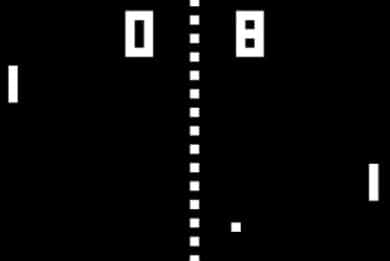
You could easily argue Pong, released in 1972, was released as an indie game because of how small the budget was and Atari was just beginning their journey. Pong was also developed by only one person. Atari co-founder Nolan Bushnell asked training instructor Allan Alcorn to create Pong as a test exercise. However, Bushnell and Atari co-founder Ted Dabney were surprised by the quality of Alcorn’s work and decided to manufacture the game.
Bushnell based the game’s concept on an electronic ping-pong game included in the Magnavox Odyssey, the world’s first home video game console. In response, Magnavox sued Atari for patent infringement. Because of Pong, the video game industry was established. Soon after its release, several companies began producing games that closely mimicked its play style. Eventually, Atari’s competitors produced new types of video games that diverged from Pong’s original format to a greater extent than previous games had. This, in turn, prompted Atari to encourage its employees to create more original games.
The Video Game Crash
In the early 1980s, it was a dark time for gaming. Despite the bright lights of Nintendo and Sega and the implosion of Atari. Consoles were most severely affected by the 1983 video game crash, as cartridges flooded the market and values plummeted. However, the PC was booming.
Tetris
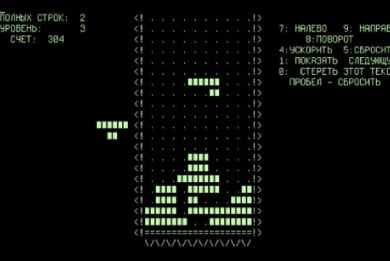
In the 1980s, the chances of creating an indie game would be slim to none. However, in 1984, the mega hit game Tetris was released. When you look back at the history of Tetris, it’s easy to see how the story of its development feels closely to other indie games that are widely regarded as “indie”.
Tetris has a couple things in common with another iconic indie game everyone knows about, Minecraft. One of the things they have in common is that they were both created by only one person. Tetris was created by Alexey Pajitnov and Minecraft was created by Markus Persson. The other thing in common, is both founders never meant to make a hit game. Tetris wasn’t planned to be one of the most iconic games of all-time. Tetris was actually created as a fun way to test out hardware during Alexey Pajitnov’s time working at the Dorodnitsyn Computing Centre in Moscow, Russia.
Ms. Pac-Man

Doug Macrae and Kevin Curran, members of MIT’s student group in 1981, operated a small arcade in a dorm room. Seeing that Missile Command machines lost profits, Macrae and Curran, who had extensive programming skills, hacked the game to a more advanced form.
After Super Missile Attack was created, the MIT group established themselves as General Computer Corporation (also known as “GCC”).
GCC was sued by Atari in August 1981 for copying the Super Missile Attack game. GCC counter-sued in response, and the lawsuit was dropped. GCC’s team was then hired by Atari as a result of various factors. Unknown to Atari, however, GCC was secretly developing a similar enhancement kit for Namco’s Pac-Man.
The GCC Pac-Man kit was finished and ready for release as ” Crazy Otto “. However, part of GCC’s settlement with Atari was that they could no longer produce “enhancement kits” for games. After a quick demonstration to Namco of Japan, Masaya Nakamura, the game was fully licensed and approved by all parties. The game was finally released in early 1982 under its final form: Ms. Pac-Man.
The Beginning of Game Engines
In 1985, the Commodore 64 was the first machine that hobbyist game creation tools were available. Some other tools that were released shortly after were: Pinball Construction Set, Shoot ‘Em Up Construction Set, Adventure Construction Set, Games Creator by Mirrorsoft, 3-D Construction Kit, and Activision Gamemaker by Garry Kitchen. Most of the games created in these tools have since been lost, because individuals could not communicate with each other or distribute them to others. However, some collections on the internet still exist on emulators.
There were other video games released in the 1980s that could be argued as being indie because of team sizes and the nature of development. But, the indie game scene took a really big step forward in the 90s.

the 1990’s
This is when things really start to pick up. Basically, any PC game made before 1997 (unless you were making a game specifically for the NES, SNES or Sega), was an indie game.
Shareware
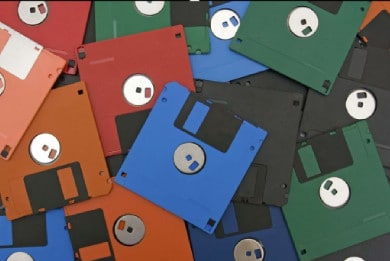
In the early 1990s, getting your indie project under gamers’ thumbs was feasible via shareware. Shareware was distributed away for free or on a trial basis, usually on compact discs or downloaded from a website with the understanding that the user may want or need to pay for it later.
Back in the 1990s, computers were bad, like very bad. And the Internet was even worse. So for software and game developers main problem wasn’t coding your game or even making it good. The biggest problem was getting it to other people who could actually play it or even look at it.
So to solve this problem, along came something called Shareware. Shareware was originally a way for software engineers to share code and software developments with one another. Sort of a you take some code from me here I’ll get some from you later, and it worked as basically a system of trading floppy disks between one another. Now Shareware evolved and twisted and did its own thing, but as far as games are concerned, it turns out these little bytesized data packets are great for passing games between one another or more specifically, individual levels of games. This method was pioneered by the guys at Apogee Software, better known as 3d Realms, the team behind Duke Nukem.
id Software & Epic Games

Two big companies of today, id Software and Epic Games started out the indie way until making it big. Both companies started out making games from their bedroom and basement, sending out floppy disks in envelopes to people who sent in checks.
Epic Games was founded by Tim Sweeney in 1990 as Potomac Computer Systems, a company that started out by creating games and mailing them to consumers. The first game released under Potomac Computer Systems was ZZT, released in 1991. ZZT was a top-down action-adventure puzzle game and a game creation system.
In 1992, Potomac Computer Systems was transformed into Epic MegaGames and released shareware games including Epic Pinball, Jill of the Jungle, and Ken’s Labyrinth. Soonerafter, Epic snagged co-founder Mark Rein and 17-year-old wunderkind Cliff Bleszinski to the firm. In September 1993, Epic MegaGames released the first Jazz Jackrabbit game for MS-DOS. The shareware edition was extraordinarily popular and earned Arcade Game of the Year honors from PC Format magazine.
id Software was officially founded in 1991, but in the late 1980s, John Carmack, John Romero, Adrian Carmack, and Tom Hall created games for a mail-order disk magazine company called Softdisk, based in Shreveport, Louisiana.
In the mid-1990s, John Carmack developed a groundbreaking scrolling technique for PC games, subsequently Hall, Romero, and Carmack developed Commander Keen, a platformer game at Softdisk.
As soon as Commander Keen in Invasion of the Vorticons was released, it became a smash hit. BBS administrators and magazine editors were immediately enthused by it, and Miller hired his mother to handle demand and telephone inquiries. In June 1991, the game was generating over US$60,000 monthly. In light of the game’s release, PC Magazine’s Chris Parker labelled it a “tremendous hit.”
The Beginning of Video Game Mods
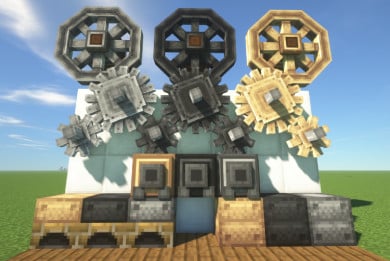
Amongst the most thriving sectors in the world of PC gaming are modded games. Modding has many similarities to indie games. It’s usually a small organized team working on either improving an existing game or making a new game out of an already existing game.
Perhaps the most important title in the history of mods, id Software’s classic first-person shooter, Doom, was released in 1993.
The creators of id Software, Tom Hall and John Carmack, knew that fans of their previous game, Wolfenstein 3D, had attempted to modify the game and, as a result, they included Doom’s maps, sprites, and textures as WAD files (for those who are curious, this acronym means “Where Are All the Data?”) so that fans could create their own levels.
In 1994, id Software pioneered the first major effort by a commercial company to make game modification and level creation easier for the game community. Due to its success, fans started posting their work and demonstrating their abilities.
This led to more ambitious mods that added new monsters and significantly altered the core gameplay. These tooling grounds also provided a gateway for skilled young coders to make their mark. Particularly active Doom level designer Tim Willits would go on to work for id, eventually taking on the position of lead designer at the firm.
Newgrounds
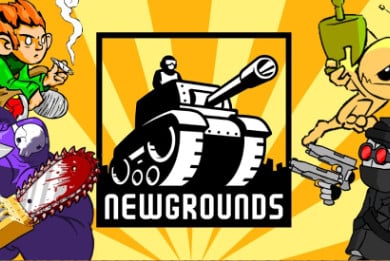
In 1995 Tom Fulp, who was 13, created the website Newgrounds, which was the first outlet to post games for public consumption. These actions would become the foundation of the indie community in the future. During the last few weeks of summer in 1996, when Tom’s friends had departed for college, Tom Fulp developed Club A Seal and Assassin. These games finally provided Newgrounds with significance.
Pico’s School, which many considered Flash 3 programming’s pinnacle, was introduced. Flash 3 didn’t have many programming capabilities; even variables weren’t supported. Tom created a sophisticated method for tracking events and data, making Pico the most advanced Flash game on the web. Pico was made much simpler to build once variables were introduced in Flash 4. By the end of the year, he had also made UFA and Samurai Asshole. He programmed them while working for Qwest.
Game Engines Continue to Evolve
Before the 90s came to an end, a vital game engine was created that would make indie game development a lot easier than it previously had been. In 1999 Game Makers was released.
Game Maker by Mark Overmars is a 2D game engine that later emerged as the most popular game engine for amateurs and enthusiasts, with millions of games created in it and many indie developers starting with Game Maker before moving on to other engines.
Flash Games Go Viral
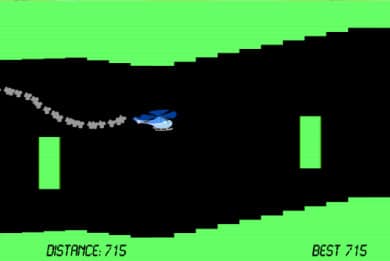
At the close of the decade, Flash was used by 99% of online computers. Flash was used as the backbone for almost every major online video provider, including YouTube, Hulu, and the BBC, beginning in the early 2000s. After that, something strange occurred. Amateur programmers across the world began using this software to create video games. Flash games became a billion-dollar business as Newgrounds, Armor Games, and Kongregate, among others, attracted millions of users. Flash became one of the most significant programming languages in video games, and the indie game revolution was sparked as a result.
Sites like Newgrounds, addictinggames, onemorelevel, Miniclip, Armour Games and Kongregate are still up and running today but have since shifted to HTML5 games since Adobe stopped support for Flash.
However, the prospect of creating full-fledged games became dimmer and dimmer, independent developers kept their skills sharp by modding existing games. When Gabe Newell and his team at Valve released Half-Life in 1998, they would never imagine the impact they would have on the history of indie games. The free software development kit created by Valve led to a thriving modding community.
the 2000’s
So far, the 2000s was the most important period in the history of indie games. It set everything up for indie game developers to be successful in creating games and for getting them noticed by gamers.
Game Mods Surge in Popularity

Valve Software, the first major studio to regularly hire the best mod developers and the most talented level designers from the community to work on its official titles, is also known for successfully blurring the lines between players and developers.
In the late 1990s, the world of modding games grew steadily, but it wouldn’t be until after the release of Half-Life that modding really exploded. Half-Life was built with Valve’s Source engine. The Source engine originates from the GoldSrc engine, which was a heavily modified version of John Carmack’s Quake engine and with some code from the Quake II engine.
Two years after the release of Half-Life, an individual coder, Minh Le, modded the game to model the theme of terrorism and counter-terrorism. This game was called Counter-Strike.
Le, hoping that the game would find a small audience interested in the subject matter, was surprised when Counter-Strike caught the public’s imagination in a big way. Minh Le was aided by his working partner Jess Cliffe, who managed the game’s website. Using the players’ feedback from the website, Le was able to establish a dialogue with the players, resulting in changes and innovations in subsequent updates for Counter-Strike.
Valve recognized the potential of Counter-Strike and hired Le and Cliffe, and then acquired the game. In the years since, the original modification has spawned a popular franchise that players are still enjoying in enormous numbers today. The Source engine was heavily embraced by the modding community.
Mod DB
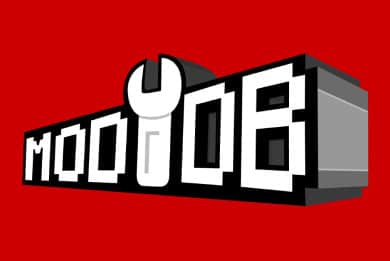
Mod DB’s development started on January 11th in 2002, closely following IMDB’s structure in the process. The website was launched as Mod DB on 8 June 2002. The website grew rapidly in popularity and database size.
The goal of Mod DB is to list mods, files, tutorials, and information for any games that are capable of being modded. Any game mod with a website may post a screenshot gallery, news, and help requests, and community involvement is highly encouraged.
The Golden Spanner awards, provided by Mod DB, are intended to set industry standards for innovation and quality in mods. Mods are nominated by the community and then reviewed by staff to select the winners. The competition is intended to encourage every aspect of modding, including graphics and gameplay, as well as a ‘best mod’ winner.
Half-Life 2

In 2004, everything changed when the most important indie game ever was released worldwide and introduced a change that would shift the gaming industry as a whole. That indie game was Half-Life 2. I hear you saying: “ but Half-Life 2 isn’t an indie game. Valve is a big company, and they still won’t give us Half-Life 3.” But yes, Half-Life 2 is an indie game. Half-Life 2 didn’t have a lot of the aspects that define modern indie games; the team wasn’t notably small, the budget was weird because Gabe Newell promised to fund it himself if the money ran out and it wasn’t a simple concept game. It was actually a huge undertaking, but Valve is different from most companies. They don’t have deadlines and nobody is anyone’s boss. Every step of the creation process is kind of like a communal effort. This combination allows a space in which a very uniquely crafted game can be made. This gave us Half-Life 2, a story based first-person shooter that completely revolutionized physics and puzzle solving in games.
It’s important to remember that back in 2004, Valve wasn’t the insane gaming powerhouse entity we know today. Valve was one of the companies that, in the early shareware days, sold their games primarily as floppy disks and all that stuff mentioned near the beginning of this article.
Half-Life 2 was the first game that Valve published their own game. At this point, most game devs were taking their games to major publishers, like Activision, Microsoft, EA, etc. But instead, Valve went to themselves using their brand new online distribution client: Steam.
The Steam Revolution
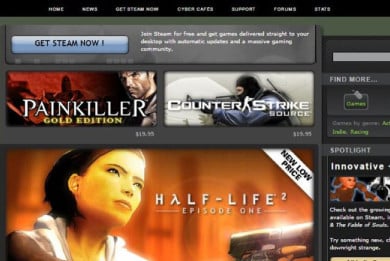
Valve’s digital distribution service and storefront Steam was released as a software client in September 2003 to provide automatic updates for Valve games.At first, the Steam digital storefront was a buggy, overloaded, and painfully designed platform that provided distribution, updates, and games from Valve. While it was not flawless, Steam was the first successful digital distribution platform that targeted users’ demands. Downloads could occur on any machine forever. But Steam didn’t become big until after the release of Half-Life 2.
Steam changed the indie game industry. Before digital distribution, there was a huge obstacle for indie developers. You had to either sell your game yourself on the web or seek a publisher. Being an indie developer became more profitable and more possible thanks to Steam.
Rag Doll Kung Fu, released in 2005, became the first non-Valve indie game to be sold on Steam, positioning the stage for Steam’s global dominance in the PC marketplace.
Physical retail was where the money was until the steampowered.com domain was registered, and while shareware titles continued to grind their way up the payment ladder, the steampowered.com domain was where the money was. At the time, British indie studio Introversion was burning games to discs and taking orders online. Introversion would later be one of the first third-party developers to release on Steam, with their techno-adventure Darwinia.
Unity Engine
The Unity Engine was first announced and released in 2005 at the Apple Worldwide Developers Conference as a Mac OS X game engine. The engine has since been extended to target a variety of desktop, mobile, console, virtual reality, and other platforms. The Unity Engine was created to make game development accessible to more developers, which helped the surge of development for indie games.
The Emergence of Xbox Live Arcade

In 2004, Bill Gates unveiled Xbox Live Arcade at the Microsoft Conference, and Steam was ramping up to compete with the mainstream game industry. When the Xbox 360 was released in 2005, the service grew. Live Arcade was instrumental in encouraging big-name studios to work with indie developers, because it provided the status and financial security of the Microsoft name.
Indie developers were made accessible to Steam and Xbox Live Arcade, which had previously been closed off to them. Many had formerly worked at commercial games companies, but after the indie scene began to flourish, they returned to their keyboards. After burning out at commercial game companies, programmers sought creative freedom, hobbyists commenced coding once again, and Game Maker and Unity became standard components of their toolkits. The indie marketplace was already thriving, and software was developed to further enhance it. The word ‘indie’, once relegated to niche media, was now being used to characterize quality content in mainstream media.
Gary’s Mod
Garry’s mod, released in 2006, is a sandbox game created by Garry Newman. Players can utilize the Source engine to design everything from web comics to unique game modes. It is one of the most successful indie products on Steam, and has inspired many players to create elaborate mods. There are no limitations on what you can do in the game.
The game makes use of the Havok Physics Engine, which is an altered version of the Source engine’s Havok Physics Engine.
The Beginning of Social Media

Probably the most important thing to ever happen for independent game developers was the creation of social media. In less than a generation, social media had gone from being a direct electronic information exchange to a virtual gathering place to a retail platform to being a vital 21st-century marketing tool.
To succeed as an independent studio, you must make the most of the opportunities offered by social media. It is the perfect platform to connect with customers, gather valuable data, and build a recognisable brand presence.
Shortly after Facebook was released in 2004, social media platforms exploded. YouTube and Reddit both released in 2005 and Twitter emerged a year later. This was paramount for indie game developers as they didn’t have to rely on traditional means, such as magazines and game websites to get their game attention. This gave indie developers a place to showcase their games and build an audience.
Unreal Engine 3
The Unreal Engine 3, released in 2007 by Epic Games, was readily available to modders, but it was hard to publish and sell games built using the engine. However, in November 2009, Epic made the Unreal Development Kit (UDK) free to the public, thus helping the emergence of more indie games and being capable of competing with the graphics of AAA games.
The Indie Game Boom!
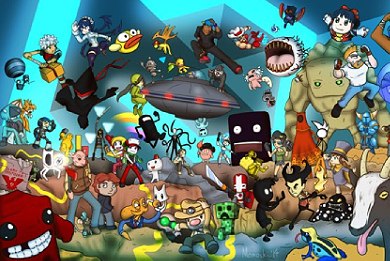
The rise of indie games has been groundbreaking. Some indie games stand out as masterpieces that redefined their respective genres, while others opened new doors for games to be successful after them.
Indie games like Cave Story and Alien Hominid were successful prior to 2008, but that year they broke into the mainstream. Braid and Castle Crashers, two games that were promoted during the Xbox Summer of Arcade campaign, began to normalize the habit of downloading small, downloadable games over larger ones that were sold on disc.
Because of the healthy independent industry, growing ecosystems fuelled further developments and public awareness at its highest point, it became clear that indies were here to stay. Certain genres began to flourish in popularity and soon came to symbolize indie culture in many people’s eyes. Old-school pixel aesthetics took arcade veterans back to the 8-bit era, while interactive story games demonstrated that games may now have profound messages and stories.
Before the turn of the decade, two very important games were released that would take indie gaming to the next level.
Braid
In 2008, Braid was released. Braid arguably started the meteoric rise of the genre, blending intricate puzzles and a complicated story in a fresh way. The player is sent to save a princess, only for the game’s twist ending to reveal something totally unexpected. This directly challenged the notion that gamers control the lead in a new way. In a now-deleted post about Braid’s success, developer Johnathon Blow reported that the game was the highest-selling Xbox Live Arcade game in 2008, bringing more attention to indie games.
Minecraft
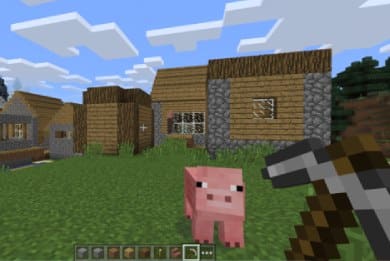
In 2009, Minecraft made its mark as something special in a short period of time. Its innovative mechanics were simple to comprehend and fun to use, its distinctive art style was instantly iconic, and its open world allowed players to escape from the real world as well as create their own. Because of their childhood fascination with LEGO and construction, youngsters were particularly attracted to it.
Despite the fact that a lot has been added to Minecraft since its release, its basic design remains the same. The game brought open-world survival games into the limelight, prompting many other games to follow after it, and had a significant impact on the industry by proving that an indie developer can also publish their own game and succeed.
The 2010’s
Indie games were starting to go toe to toe with AAA games and producing comparable graphics and quality. Because of the evolution of game engines, it was becoming easier for indie developers to create amazing looking games.
Indie DB
Indie DB is an offshoot of Mod DB that was launched in June 2010. It focuses on indie gaming and maintains a database of those games. It’s a platform that helps independent developers and their games by providing them with a place to showcase their hard work.
Like Mod DB, the website hosts an annual competition for the best indie game of the year, in which games are voted on. The nominees are selected by the website’s editors and voted on by its users.

Desura
Desura released near the end of 2010 and was an excellent website for indies who couldn’t get their game on Steam. It played an important role in helping indie developers move from the traditional publisher model (in which you usually get screwed) to self-publishing digital distribution.
It’s unfortunate that Desura became redundant once Steam opened the floodgates with Greenlight and started allowing just about anything in. But regardless, they should be appreciated for the role they played in their early years.
Angry Birds Revolutionizes Mobile Gaming

Angry Birds was an indie game released by Rovio at the end of 2009. In the news at that time was the 2009 swine flu epidemic, so because of that, the staff decided to use pigs as the enemies in Angry Birds. Rovio’s bird-flinging, structure-smashing, and pig-crushing game was one of the earliest successes for mobile gaming.
Angry Birds was originally published by Chillingo. But Rovio took back control when Electronic Arts acquired the publisher. By that time, the game’s appeal had begun to spread. The original free-to-play Lite version was the most downloaded mobile game of 2010.
Meanwhile, the more established AAA game studios were struggling to adapt established franchises for mobile with unintuitive controls and gameplay attempting to emulate the console or PC experience on a touch screen. It took an indie game to show the way forward for mobile gaming.
What made Angry Birds so successful was its mobile-centric design. It leveraged the possibilities of smartphones with touch and gesture control, resulting in innovative yet simple gameplay that anyone can pick up and play. Eventually, the franchise got so huge that a big-budget movie was created and released in 2016.
Indie Game: The Movie
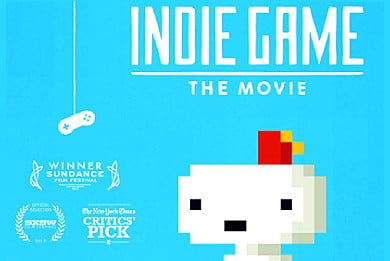
In 2012, the hugely successful documentary, Indie Game: The Movie was released, which helped make the indie game sector more popular. The film chronicles the triumphs and tribulations of three independent game developers as they work on their respective games, Super Meat Boy, Fez, and Braid.
In the documentary, Jonathan Blow, the creator of Braid, discusses why he created the game and how his initial ideas evolved into discoveries. He also discusses the effects of the game: After Braid was released, it received widespread critical praise, but Jonathan was disappointed, because a large portion of players ‘didn’t get’ the game’s underlying messages and themes. In an effort to influence the audience’s opinion of the game, he posted on forums and blogs, which made him a bit of a comic character.Edmund McMillen and Tommy Refenes of Team Meat (developers of Super Meat Boy) wanted to create a platformer game that evoked memories of their own childhood games. McMillen expresses his desire to communicate with others through his work. He also discusses his 2008 game Aether, which explored his childhood feelings of loneliness, nervousness, and abandonment.
Phil Fish is in the fourth year of development for Fez. The game has been stuck in development hell. Fish himself says that the delays were caused by gameplay perfectionism and lost sight of how good the game is as a consequence.
Steam Greenlight
In 2012, Steam Greenlight was established to allow small publishers to get their games on Steam without the assistance of an important publisher. Steam users could vote on Greenlight games, and Valve would accept games that had enough support to suggest that they would sell well. Greenlight had its pros and cons. One of the cons; developers could bribe users through rewards for voting, and quality projects would be buried under a mass of bad ideas.
Crowdfunding
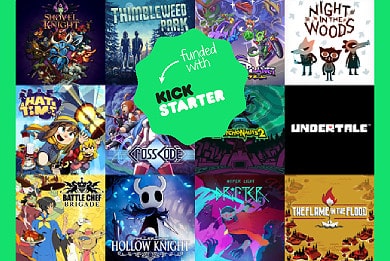
Crowdfunding, where gamers pay to help fund the development of a video game, is a wonderful method for indie game developers to fund their projects. The use of crowdfunding in video games had been present for several years prior to 2012, but was not considered viable and was restricted to small-scale games.
It wasn’t until 2012 until crowdfunding really took off for video games. Kickstarter became huge when Broken Age, a point-and-click adventure game by Double FIne Productions, became an immediate hit when it was funded by the Kickstarter service to the tune of $3 million, exceeding the $400,000 request by a large margin and becoming the highest funded project on Kickstarter at the time.
Soon after, many indie game developers took advantage of crowdfunding to develop their games. Some notable indie games crowdfunded by Kickstarter include: FTL: Faster Than Light, Shovel Knight, Undertale, Night in the Woods, etc.
Though IndieGoGo was the first crowdfunding platform, Kickstarter has been the go-to platform for indie developers. Since the successes of IndieGoGo and Kickstarter, many new crowdfunding platforms have emerged, such as: Patreon, Fig, etc.
The Beginning of Early Access
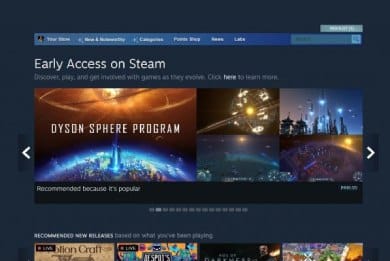
Markus Persson created Minecraft as one of the earliest manifestations of Early Access. He began developing the game in 2009 as a content creation project in addition to his full-time work. Within a month of release, Persson added a way for players to pay to access the alpha-version game, allowing him to continue its development. Since sales of the game increased, he was able to quit his job about eight months later.
Eventually digital distribution storefronts provided the sales and distribution mechanisms for developers to sell their games under early access.
In 2011, Desura launched an alpha-funding initiative to help indie developers promote upcoming titles.
In March 2013, Valve established an early access program for Steam, allowing developers to take advantage of the storefront and the Steamworks API.
Total Conversion Mods

The mod community has been creating their own content and sharing it online for decades, and some of it has become rather famous. The mod scene is home to many simple mods, but some have turned into massive reworks of the game known as “total conversions.” These mods change the game fundamentally, altering its levels, enemies, weapons, music, and even storyline, hence “total conversion.”
Like indie games, video game mods have evolved and surged in popularity. Some notable total conversion mods released in the 2010s are; Black Mesa, Cry of Fear, The Stanley Parable and DayZ.
What you see happening now is exciting. Developers are encouraging game players to express their creativity at a grassroots level (through level editors and self-publishing gateways), as well as providing professional tools and development kits to nurture budding talent.
Flappy Bird Goes Viral
Flappy Bird, released in 2013, is worth noting because of its impact at the time for mobile gaming. Flappy Bird became a viral sensation overnight due to dramatic, compelling, negative feedback about the game on Twitter, to the tune of “it’s so bad/impossible you have to try it”.
The game had been out for months before this occurred, with minimal growth or interest, and only minor changes were made. When the game went viral, the game developer (Dong Nguyen) was so surprised by the feedback that he pulled the game to try to regain his sanity.
The Release of itch.io
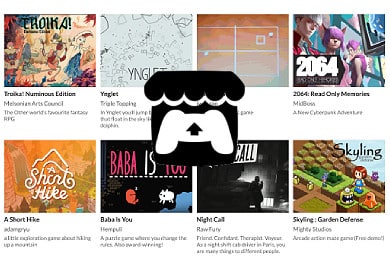
On March 3, 2013, Leaf Corcoran posted a blog entry to the site leafo.net detailing what the future website would be about, with a pay-what-you-want model. According to Rock Paper Shotgun, the original idea was not a store but rather a place to “create a customized game homepage.”
Launched in March 2013, users can host, sell and download indie games on Itch.io. It also allows users to host game jams, events where participants have limited time (usually 1–3 days) to create a game.
Itch.io is generally regarded as a good platform for new game developers to practice creating games and profit from them because of the amount of freedom developers have there. Itch.io game jams, on the other hand, are regarded as a fantastic way for new game developers to get publicity and improve their game developing abilities.Typically, video game development has been funded by large publishing companies or are alternatively paid for by the developers themselves as independent games. Other funding may come from government incentives or from private funding.
YouTube Let’s Plays

It is impossible to pinpoint the history of Let’s Plays. Let’s Plays were once posted on forums like Something Awful as screenshot stories but has since evolved onto platforms like YouTube and Twitch.
Gaming has become one of YouTube’s biggest draws thanks to the gaming community that has developed on the platform. Millions of people visit YouTube daily in order to watch their favorite YouTubers play a variety of games. The availability of screenshot capturing software and video recording gadgets has enabled video game players to record themselves playing games, including walkthroughs, playthroughs, and speedruns.
Of the top twenty most subscribed YouTube publishers of 2014, eleven were Let’s Play producers.
Indie games definitely don’t receive the same level of marketing as AAA games – you’re likely already familiar with the latest Call of Duty or Battlefield games. But how much do you know about Seasons After Fall, Abzu, or Sneak Thief? This is why you can enjoy finding new indie games to play through YouTube Let’s Play videos.
Thanks to YouTube Let’s Players like Markiplier who regularly play indie games, help provide exposure that can propel an indie game to become successful. Furthermore, there are many additional Let’s Players (Pewdiepie, Cupquake) who also cover indie games.

Indiepocalypse?!
Leading into 2015, there were fears regarding saturation and discoverability. With the abundance of easy-to-use tools to create and distribute video games, an oversupply of indie games flooded the market. Very few indie games got wide coverage in the media.
While there hasn’t been any type of collapse in the indie game market since 2015, more and more indie games are being produced each year, and likewise, more and more games are being distributed via Steam. As a result, developers have come to rely on Steam’s discovery tools—methods to tailor catalog pages to customers based on past purchases—to sell their games.
Initially, it was bad news for indie developers when Steam Greenlight was shut down halfway through 2017. Though soon after, Valve introduced Steam Direct as its replacement.
Nintendo Steps Up
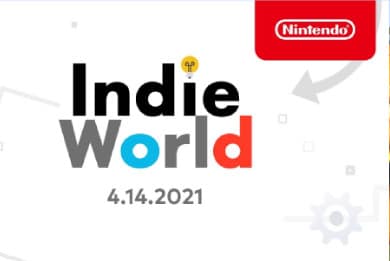
Third-party publishers were left out in the cold with the Wii, as Nintendo’s own games were the system sellers. However that changed in the middle of 2016 when Nintendo began providing assistance to indie developers to help them bring games to the Switch.
Nintendo contacted many indie developers and publishers, including Team 17, Devolver Digital, and Chucklefish, in order to get games for their console and make the process of publishing simpler. Nintendo predicted that there would be at least 60 indie games released for the Switch through 2017, but due to the console’s popularity, they ended up with over 320 titles by the end of the year.
Also in 2017, Nintendo began to promote indie developers with a 20-minute livestream showcasing games from indie developers. Nintendo hosted this livestream using the Nintendo Switch Nindies Showcase name in 2017 and 2018. Nintendo rebranded the live-stream to the Indie World Showcase in 2019.
Epic Games Store

The Epic Games Store is a digital video game storefront for Microsoft Windows and macOS, operated by Epic Games. It was launched in December 2018 as both a website and a standalone launcher, allowing users to download and play games.
The Steam store has been open since 2003, and Epic has long wanted to compete with it. Developers normally turn to Steam for distribution because of its large number of users. But Steam’s dominance also means that it has not had to reduce its fees. Epic has been praised by indie game developers for its friendlier attitude towards them.
To help indie game developers create their dream games, Epic has gathered a number of valuable resources to help make the process easier. Developers can now launch, operate, and scale high-quality games faster and more easily thanks to Epic’s Online Services. They’ve tackled numerous challenging issues over the years and are now sharing the benefits with the rest of the development community free of charge.
Indie Developers Take Advantage of Virtual Reality

Virtual Reality is still a market that hasn’t quite gone mainstream like consoles have. VR had a very slow start, though it’s doing better than it ever has. Before the turn of the decade and into the 2020s, many important VR indie games were released.
From data in 2020, the most revenue made from a Virtual Reality game was an indie game; Beat Saber. Right behind it was Half-Life: Alyx. And if you want, you can argue that Half-Life: Alyx is an indie game too because Valve is still an independent & self-reliant company.
Many of the top selling VR games were indie games. Superhot VR and BONEWORKS were the next best-selling Virtual Reality games.
Indie games have been a pivotal force for the success of Virtual Reality gaming. And it’s showing no signs of slowing down.
Roblox Goes Mainstream
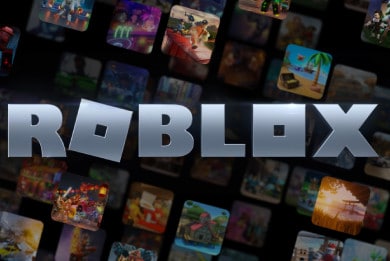
Roblox has been relatively small both as a platform and a company for much of its history. However, in the latter half of the 2010s, Roblox experienced rapid growth as a platform and a corporation. Because of the COVID-19 pandemic, this growth accelerated significantly.
The company has created one of the top-grossing apps for Apple and Google devices by turning youthful users into indie game creators without forcing them to learn complicated coding. Creators can then earn money from their games through micro-transactions.
Roblox stated in an update in 2021 that it paid developers $328.7 million in 2020, up almost 200 percent from 2019. The company said it plans to spend even more on creators to motivate higher-quality content and fund larger engineering, design, artists, and producing teams. What used to be a hobby has become a job for many individuals.
THE 2020’s
There’s been a significant increase in the popularity of indie games among all types of gamers, including hardcore players. In terms of gaming, the indie genre was the only type of game that saw year-over-year growth among American PC and console gamers in 2021.
The Metaverse

The Metaverse has been around for a while. The term Metaverse became mainstream in 2021 when Facebook changed its name to Meta, indicating its focus on shaping the future of the metaverse.
If you’re asking yourself “what is the metaverse?”, don’t feel alone, a lot of people still don’t know what the Metaverse is. The Metaverse, also known as ‘cyberspace’, is a premonition of what the computer industry believes the next phase of the internet will look like: a single, shared, immersive, three-dimensional virtual space where humans can live life in ways they cannot in the real world.
A way to prepare for the future metaverse is by looking at existing immersive online experiences, like Roblox, Fortnite, Minecraft and Second Life, which is the first metaverse game ever created.
It is possible to say that Minecraft was the first metaverse prototype created by its users, as well as the first virtual world breakthrough. The new generation is accustomed to playing, creating, communicating, watching, listening, and reading through Minecraft. Because of Minecraft, children and teens are now exposed to a range of interactive games, online social encounters, and user-generated content across a variety of media platforms.
Beat Saber’s Long-Running Success

Beat Saber, a virtual reality rhythm game, is no longer considered an indie game since its purchase by Meta in 2019. But it was an indie game when it was first released.
In 2021, Beat Saber earned more revenue than the next five biggest VR apps combined. All of the DLC in Beat Saber is primarily responsible for generating revenue. Some VR users are probably already using the name Beat Saber as a synonym for virtual reality, as Beat Saber continues to soar in popularity.
It has been exciting watching Beat Saber grow into one of the most popular Virtual Reality games and its showing no signs of slowing down.
Wordle
Wordle isn’t a typical video game, it’s a web-based word game. Wordle can be considered an indie game though because of the nature of its development. Originally, Wordle was created by Josh Wardle for himself and his partner to play.
In January 2021, Josh Wardle published Wordle on the internet. He referred to it as Wordle as a pun on his surname. During the next few months, he shared the Wordle website with other close friends, resulting in a viral spread of attention by mid-October 2021.
On January 31, 2022, the New York Times Company, which owns The New York Times, bought Wordle from Wardle for an undisclosed sum in the low seven figures. According to Wardle, the sudden attention he and his partner had gotten over the previous few months had made them uncomfortable, and also did not feel like spending the effort to fight against clones of Wordle that were appearing.

The Future of Indie Games

The exploding popularity of indie games may be credited to the rising popularity of Steam the most, which has an enormous library of independent games. In addition to game subscription platforms like Microsoft Game Pass, which has a sizable number of small-studio games. The growing popularity of indie games may also be a result of the development of game engines such as Unity, Unreal Engine, and GameMaker Studio 2, which have become more accessible in recent years. Because of the improvements in game engines, small developers may now make their gaming dreams a reality in a simpler way than ever before.
The future of indie gaming looks as promising as it ever has before. With better technology, virtual reality/metaverse environments, and new monetization models, the possibilities are endless for indie developers.
To Be Continued…
This article will be updated as new developments emerge. What do you think? Did we miss an important part of history? Let us know on Discord!